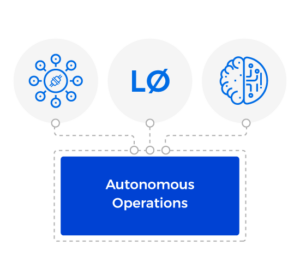IT Ops Is Fighting A Losing Battle
Your business is counting on your Ops team to keep critical services and applications humming smoothly 24×7. But ever increasing complexity in your infrastructure means that your teams are in constant firefighting mode.
The result? Your services are frequently down. SLAs are repeatedly violated. And your customers are increasingly frustrated. It is a vicious cycle that your burnt-out IT Ops team just can’t seem to escape.
This scenario – repeated daily in NOCs and Ops Centers inside large, complex enterprises like yours – takes a toll on the ability of your business to innovate and execute on critical digital transformation initiatives.
But it doesn’t have to be this way. Autonomous Operations (AO) can help.

What Is Autonomous Operations?
Advances in machine learning and AI are helping make autonomous cars a reality. IT automation is on a similar trajectory and using those technologies to make Autonomous Operations (AO) a reality.
AO delivers autonomous response and action to your incidents throughout their lifecycle. It moves enterprise IT Ops from legacy rules-based solutions of the past to a fully autonomous future. In the process, it lowers costs and helps your organization confidently transform itself digitally.
Tenets of Autonomous Operations
There are three tenets of Autonomous Operations:
- Machine Learning
- Integration Hub
- Autonomous Layer (LØ)
So all Autonomous Operations platforms must incorporate machine learning throughout, provide an integration hub that ties together all of your existing IT tools, and an autonomous layer (LØ) that is capable of managing your incidents throughout their lifecycle.

Benefits of Autonomous Operations
Reduced Costs
- Scale headcount efficiently
- Drive process efficiency
- Enable productive work
Improved Availability
- Minimize outages
- Improve SLA compliance
- Delight customers
Reduced Risks
- Enable Cloud Migration
- Ensure seamless M&A integration
- Accelerate Digital Transformation